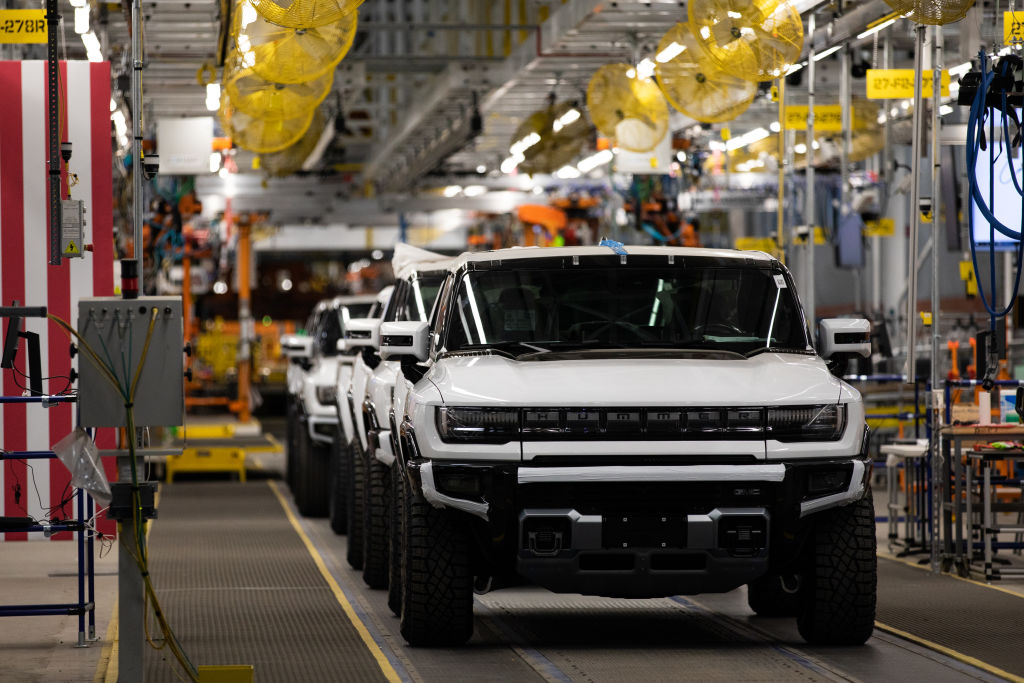
Automakers like GM and Ford were giddy about electric vehicles (EVs) at the Detroit Auto Show back in January 2018, with plans to plow billions of dollars into building zero-emission cars. Fiat Chrysler, on the other hand, signaled they would sit out the transition. “I don’t know of a [business] that is making money selling electric vehicles unless you are selling them at the very, very high end of the spectrum,” Sergio Marchionne, the company’s then-CEO, told attendees at a press conference, according to The Detroit News. Rather than plow money into a rapid electric transition, he said, Fiat Chrysler would remain “technology neutral.”
Marchionne died later that year, and the company—now renamed Stellantis—eventually came around on EVs, rolling out new electrification pledges and concept vehicles. But with California’s move this week to rapidly phase out sales of new gasoline cars in the coming years and ban them by 2035, the business’s prior foot-dragging may have cost them, especially when it comes to meeting near-term targets to sell at least 35% zero-emission vehicles in the state by 2026.
California is the largest auto market in the U.S., and more than a dozen other states tend to set their own emissions rules off California’s standard. And despite recent flashy announcements, Stellantis has little in the way of electric offerings compared to their rivals. “It’s somewhat questionable whether they can hit these targets, especially in the short term,” says Jessica Caldwell, director of insights at Edmund’s. “They don’t have very much time.”
Read more: We Watched Two Decades of Super Bowl Ads. Here’s What They Say About Climate Change.
That tough reality for companies like Stellantis is part of what makes California’s new rules so transformational. The world urgently needs to phase out fossil fuels and cut greenhouse gas emissions in order to avert catastrophic climate change. Gasoline cars and light trucks are a big part of the problem, accounting for 17% of U.S. greenhouse gas emissions—not to mention releasing other forms of air pollution that contribute to thousands of deaths. By 2050, 90% of the cars on American roads need to be electric in order for the nation to meet its emissions pledges, according to a 2020 study from researchers at the University of Toronto.
American politicians have tried for years to force car companies to make the switch that science demands. Way back in the early 1990s, California attempted to make automakers develop and sell zero-emission vehicles, a mandate that resulted in the launch of the country’s first mass market electric car, GM’s EV-1. But the effort cratered under sustained pushback from the auto industry and the George W. Bush Administration.
In the years since, the government has relied mainly on more gentle efforts to prod the car industry along, like consumer tax rebates for zero-emission vehicles. The result was that the industry was able to keep squeezing money out of 100-year-old internal combustion engine technology, while slow-walking a transition away from fossil fuels. Manufacturers only got serious about electric vehicles when it became apparent that new electric entrants like Tesla were going to take over the market if they didn’t get their act together.
Those economic realities—and perhaps a modicum of climate responsibility—may have been what ultimately prodded companies like GM and Ford into making strong plays for the electric vehicle market in the past few years. But for players who felt it was in their best interest to keep pumping out gas-guzzling cars and trucks, there was little to push them away from fossil fuel vehicles. The world needed an electric vehicle transition, but the U.S. was going to get it at whatever pace the car industry felt like.
Read more: The Engineer Who Made Electric Vehicles Palatable for the Pickup-Truck Set
Some say that may still be the case. California’s requirements—likely to sail through a required federal approval—generally fall in line with electrification timetables from companies like GM, which has previously pledged to sell only electric vehicles by 2035. Some environmental advocates say that the deadline isn’t soon enough. “We need to shift to EVs much sooner or watch our climate stability slip away,” says Scott Hochberg, an attorney at the nonprofit Center for Biological Diversity.
But despite that perceived lack of ambition, California’s new mandate at least puts elected officials in a position of dictating the speed of that electric transition to the industry, rather than the other way around. The state’s gasoline vehicle ban adds a stick to the new economic carrots for EVs passed in the Biden Administration’s recent climate bill—in this case, an up to $20,000 fine for every car sold in violation of the state’s electrification targets. That means not only rewards for companies that took the climate crisis seriously enough to invest early in electric vehicles, but also real repercussions for players like Stellantis that ignored the urgent need for emissions action to squeeze a few more dollars out of their gasoline cars and trucks. And at this stage of the game, with humanity’s chances of keeping the planet’s temperature rise below 1.5°C slipping away, those consequences are long overdue.
More Must-Reads from TIME
- Donald Trump Is TIME's 2024 Person of the Year
- Why We Chose Trump as Person of the Year
- Is Intermittent Fasting Good or Bad for You?
- The 100 Must-Read Books of 2024
- The 20 Best Christmas TV Episodes
- Column: If Optimism Feels Ridiculous Now, Try Hope
- The Future of Climate Action Is Trade Policy
- Merle Bombardieri Is Helping People Make the Baby Decision
Write to Alejandro de la Garza at alejandro.delagarza@time.com